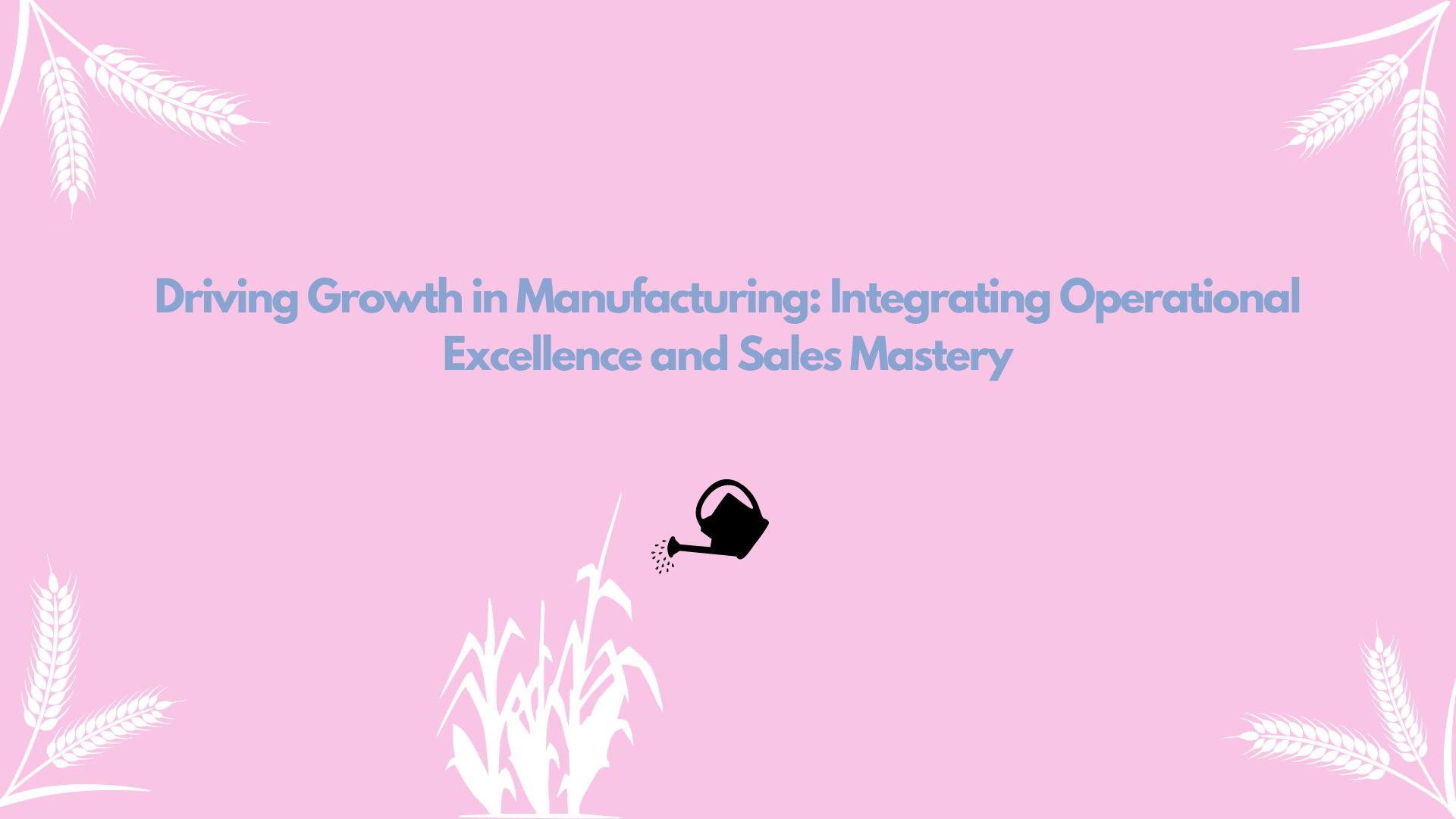Introduction
The manufacturing industry faces numerous challenges, from maintaining production efficiency to navigating complex sales channels. Integrating operational excellence with sales mastery is key to driving growth and staying competitive. This blog explores how manufacturing businesses can align these two critical functions to achieve sustained success.
Operational Excellence in Manufacturing
Operational excellence in manufacturing involves optimizing processes to enhance productivity, quality, and efficiency. Key components include:
- Continuous Improvement: Implementing methodologies like Six Sigma and Kaizen to constantly refine processes.
- Smart Manufacturing: Leveraging Industry 4.0 technologies such as IoT, AI, and machine learning to automate and optimize operations.
- Supply Chain Optimization: Streamlining the supply chain to reduce lead times and improve reliability.
Sales Mastery in the Manufacturing Sector
Sales mastery involves developing strategies and capabilities to effectively engage customers and close deals. Essential elements include:
- Customer-Centric Approach: Understanding and addressing the unique needs of customers in the manufacturing sector.
- Sales Enablement: Equipping sales teams with the tools, knowledge, and resources needed to sell effectively.
- Performance Metrics: Using KPIs to measure sales performance and identify areas for improvement.
Strategies for Integration
Successfully integrating operational excellence and sales mastery requires strategic initiatives that align both functions:
- Unified Vision and Goals: Establish a common vision and set of goals that both manufacturing and sales teams work towards.
- Cross-Functional Teams: Create teams that include members from both manufacturing and sales to foster collaboration and mutual understanding.
- Integrated Technology Platforms: Use integrated ERP and CRM systems to ensure seamless communication and data sharing between teams.
- Feedback Mechanisms: Develop feedback loops where sales teams provide insights on market trends and customer feedback, which manufacturing can use to adjust processes and products.
Case Study: Transforming Manufacturing with Integrated Strategies
Consider a manufacturing firm specializing in automotive parts. Through integrated strategies:
- Continuous Improvement: The firm adopts Six Sigma to reduce defects and improve production efficiency.
- Smart Manufacturing: IoT sensors and AI algorithms are used to monitor equipment and predict maintenance needs, reducing downtime.
- Customer-Centric Sales: Sales teams leverage CRM data to understand customer preferences and tailor their approach.
By aligning these efforts, the firm can respond more quickly to market demands, produce higher-quality products, and ultimately increase sales.
Benefits of Integration
Integrating operational excellence with sales mastery offers numerous advantages:
- Enhanced Efficiency: Streamlined operations lead to cost savings and higher production rates.
- Increased Revenue: Effective sales strategies drive higher conversion rates and customer retention.
- Improved Quality: Continuous feedback and process improvements result in superior product quality.
- Greater Agility: Integrated teams can adapt more quickly to changes in the market and customer needs.
Conclusion
In today’s competitive manufacturing landscape, aligning operational excellence with sales mastery is essential for driving growth and achieving long-term success. By fostering collaboration, leveraging technology, and focusing on continuous improvement, manufacturing businesses can enhance efficiency, increase sales, and deliver greater value to their customers. Implement these integrated strategies to stay ahead of the competition and thrive in the ever-evolving market.









